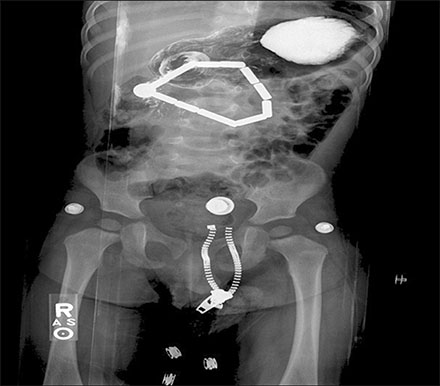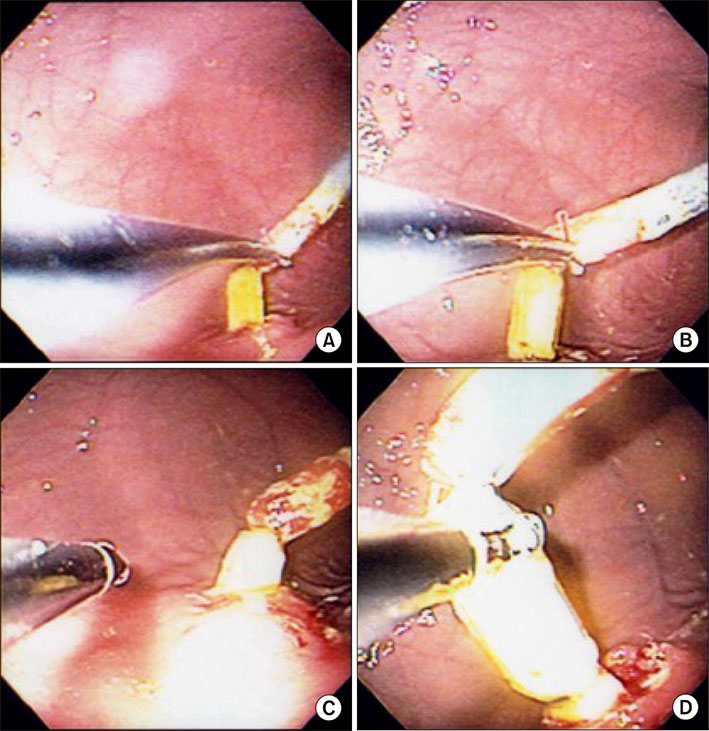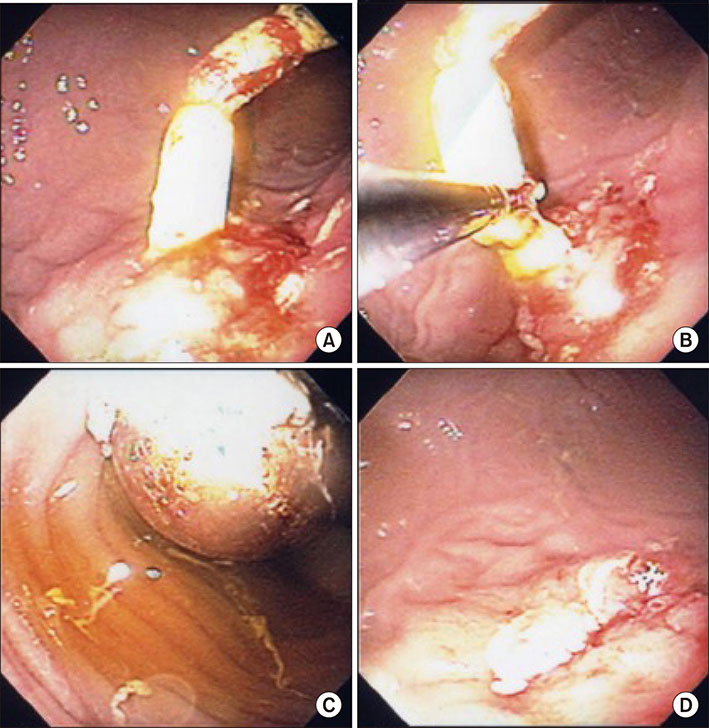Pediatr Gastroenterol Hepatol Nutr.
2018 Oct;21(4):336-340. 10.5223/pghn.2018.21.4.336.
Non-Surgical Management of Gastroduodenal Fistula Caused by Ingested Neodymium Magnets
- Affiliations
-
- 1Office of Medical Education, Johns Hopkins All Children's Hospital, St. Petersburg, FL, United States. mwilsey1@jhmi.edu
- 2College of Arts and Sciences, Florida State University, Tallahassee, FL, United States.
- 3College of Arts and Sciences, University of Florida, Gainesville, FL, United States.
- 4Pediatric Gastroenterology, Carolines Healthcare System, Charlotte, NC, United States.
- 5Pediatric Gastroenterology, Johns Hopkins All Children's Hospital, St. Petersburg, FL, United States.
- KMID: 2421997
- DOI: http://doi.org/10.5223/pghn.2018.21.4.336
Abstract
- Foreign body ingestions pose a significant health risk in children. Neodymium magnets are high-powered, rare-earth magnets that is a serious issue in the pediatric population due to their strong magnetic force and high rate of complications. When multiple magnets are ingested, there is potential for morbidity and mortality, including gastrointestinal fistula formation, obstruction, bleeding, perforation, and death. Many cases require surgical intervention for removal of the magnets and management of subsequent complications. However, we report a case of multiple magnet ingestion in a 19-month-old child complicated by gastroduodenal fistula that was successfully treated by endoscopic removal and supportive care avoiding the need for surgical intervention. At two-week follow-up, the child was asymptomatic and upper gastrointestinal series obtained six months later demonstrated resolution of the fistula.
Keyword
MeSH Terms
Figure
Reference
-
1. Oestreich AE. Worldwide survey of damage from swallowing multiple magnets. Pediatr Radiol. 2009; 39:142–147.
Article2. Abbas MI, Oliva-Hemker M, Choi J, Lustik M, Gilger MA, Noel RA, et al. Magnet ingestions in children presenting to US emergency departments, 2002-2011. J Pediatr Gastroenterol Nutr. 2013; 57:18–22.
Article3. Kramer RE, Lerner DG, Lin T, Manfredi M, Shah M, Stephen TC, et al. North American Society for Pediatric Gastroenterology, Hepatology, and Nutrition Endoscopy Committee. Management of ingested foreign bodies in children: a clinical report of the NASPGHAN Endoscopy Committee. J Pediatr Gastroenterol Nutr. 2015; 60:562–574.4. Waters AM, Teitelbaum DH, Thorne V, Bousvaros A, Noel RA, Beierie EA. Surgical management and morbidity of pediatric magnet ingestions. J Surg Res. 2015; 199:137–140.
Article5. Dutta S, Barzin A. Multiple magnet ingestion as a source of severe gastrointestinal complications requiring surgical intervention. Arch Pediatr Adolesc Med. 2008; 162:123–125.
Article6. Bauman B, McEachron K, Goldman D, Louiselle A, Zheng E, Mills D, et al. Emergency management of the ingested magnet: an algorithmic approach. Pediatr Emerg Care. 2017; DOI: 10.1097/PEC.0000000000001168. [Epub ahead of print].7. Hwang J, Park M, Choi S, Park W, Kim AS. How strong construction toy magnets are! A gastro-gastro-duodenal fistula formation. J Pediatr Gastroenterol Nutr. 2007; 44:291–292.
Article8. Ohno Y, Yoneda A, Enjoji A, Furui J, Kanematsu T. Gastroduodenal fistula caused by ingested magnets. Gastrointest Endosc. 2005; 61:109–110.
Article9. Sugawa C, Ono H, Taleb M, Lucas C. Endoscopic management of foreign bodies in the upper gastrointestinal tract: a review. World J Gastrointest Endosc. 2014; 6:475–481.
Article10. Tsai J, Shaul DB, Sydorak RM, Lau ST, Akmal Y, Rodriguez K. Ingestion of magnetic toys: report of serious complications requiring surgical intervention and a proposed management algorithm. Perm J. 2013; 17:11–14.
Article
- Full Text Links
- Actions
-
Cited
- CITED
-
- Close
- Share
- Similar articles
-
- A Case of Gastroduodenal Fistula Caused byIngested Magnetic Foreign Bodies
- Duodenal Obstruction and Acquired Gastroduodenal Fistula Caused by Magnets: A Case Report
- Gastrojejunal Fistula with Jejunal Rotation Caused by Two Ingested Magnets in a Child: A Case Report
- Gastrointestinal Perforation Caused by Neodymium Magnet Toys: A Dangerous Foreign Body with SuperStrength
- Caution warnings are required for the sale of neodymium magnets in Korea




